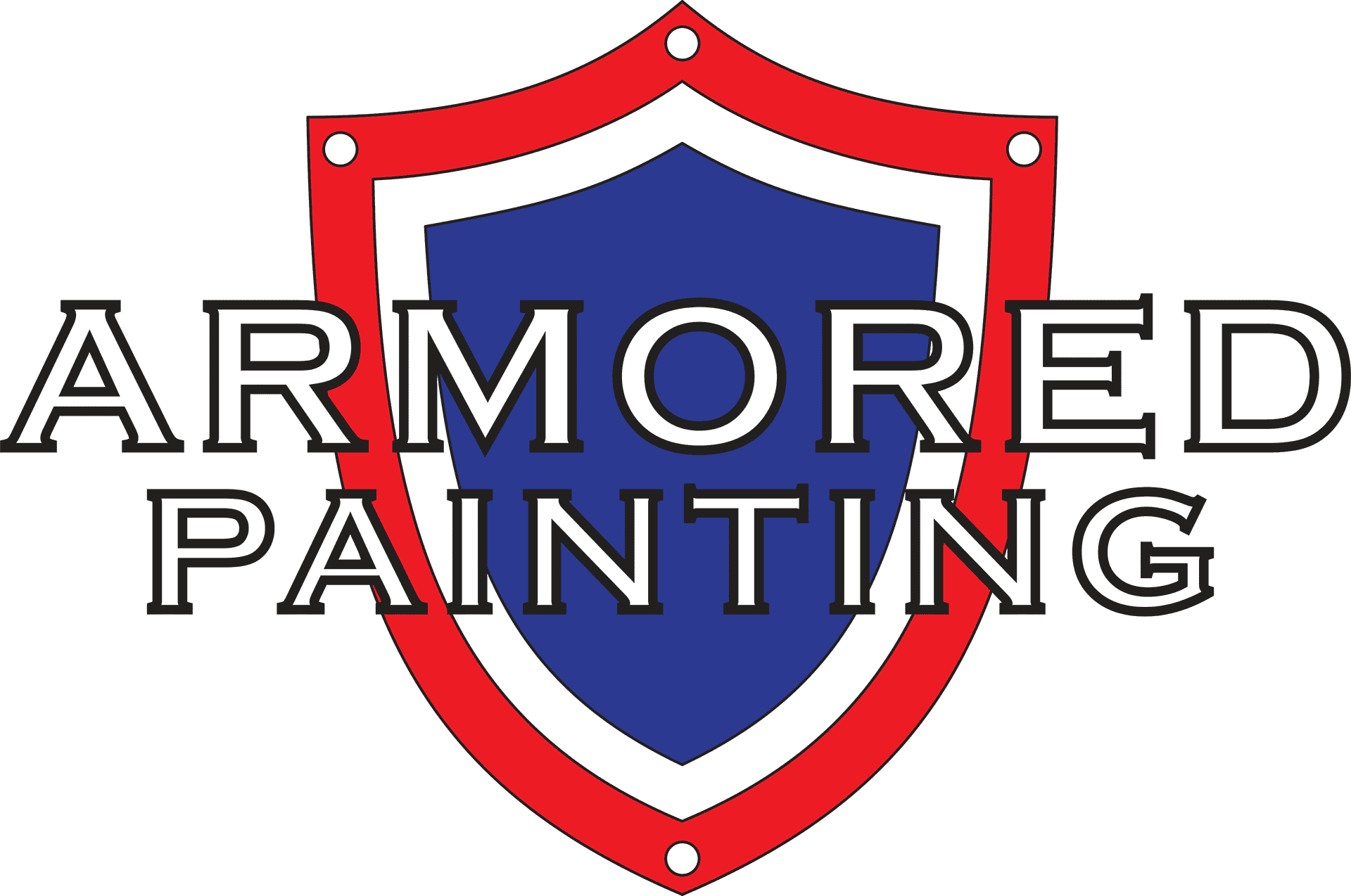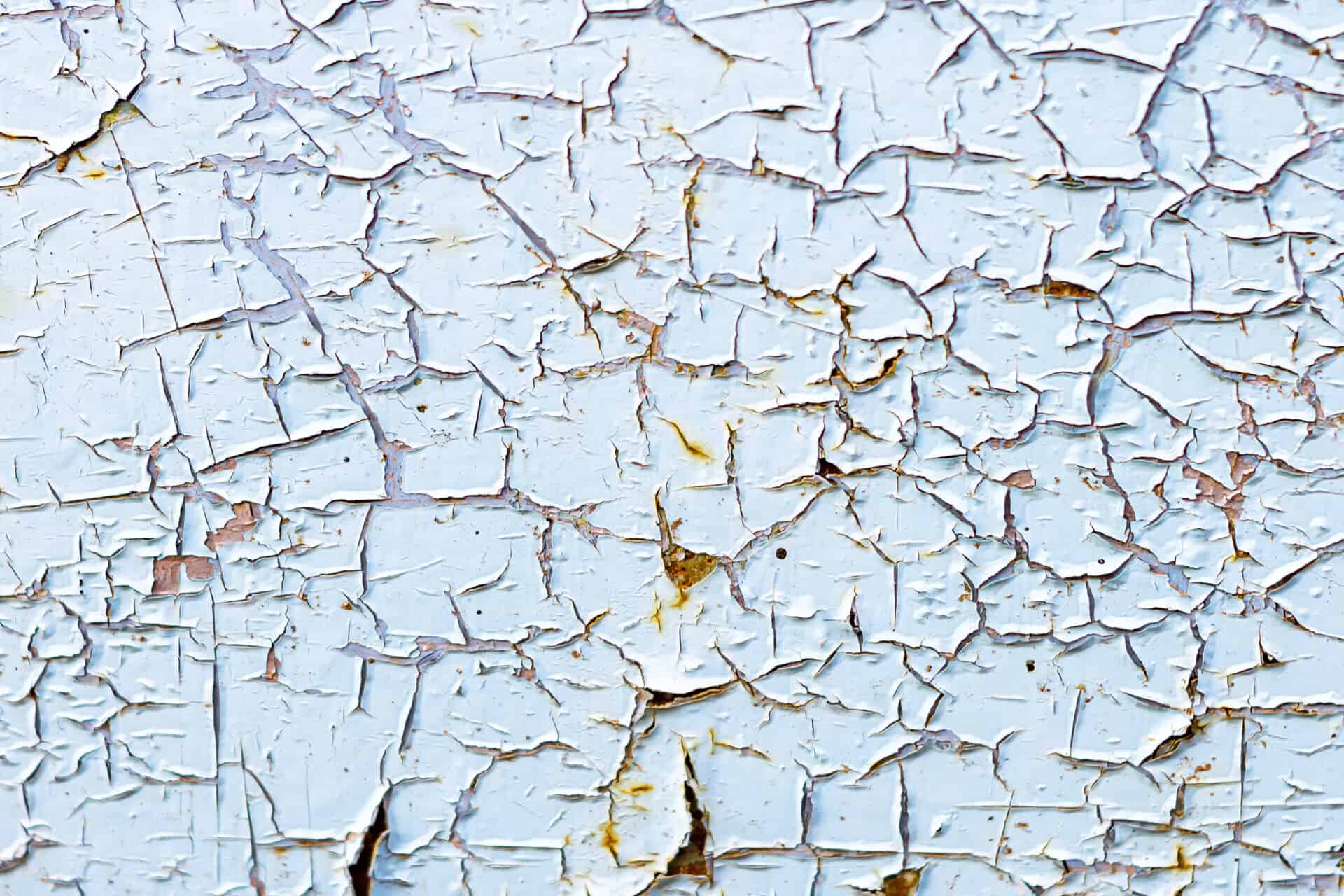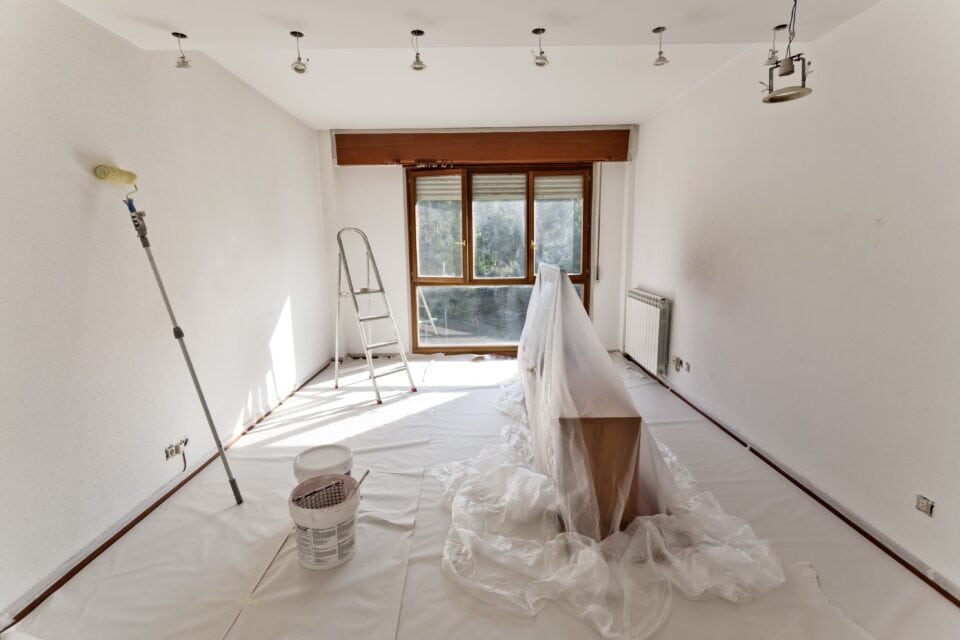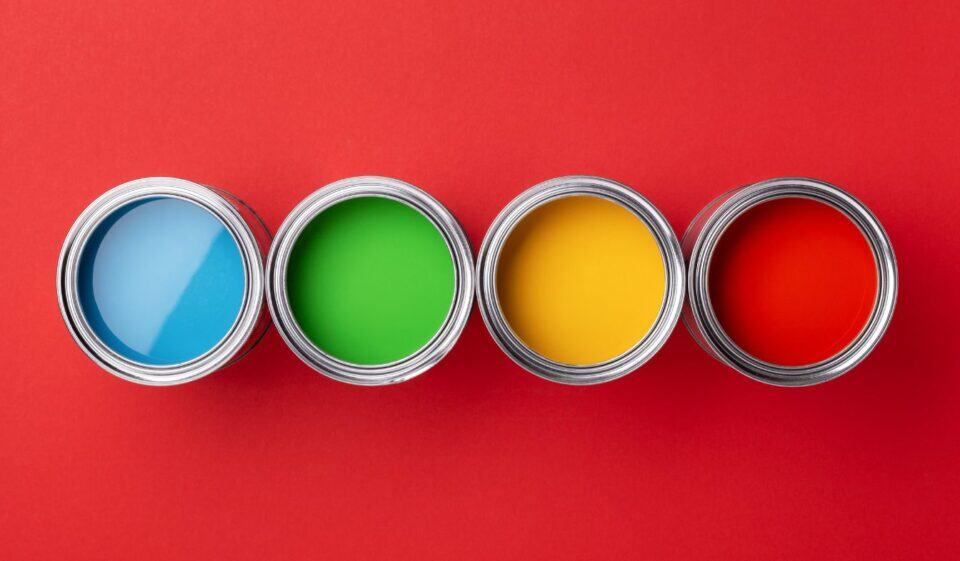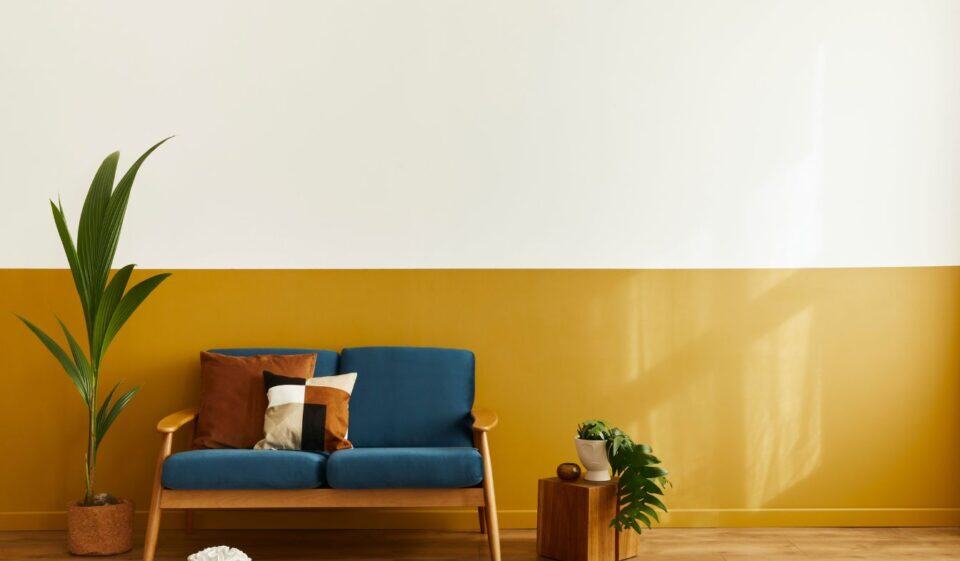Unsightly peeling paint is a common issue that can plague your home’s interior. The sight of flaking paint can leave you wondering, “Why does interior paint peel?” The culprits could range from a bad paint job, using too much latex paint, or even improper surface preparation. Various factors, such as water damage, excessive paint layers, and high humidity, can also lead to paint peeling off your walls. This post aims to shed light on these causes and provide a guide on how to avoid this frustrating issue.
Key Takeaways
- Paint peeling in interiors is often due to improper surface preparation, dirty surfaces, and excessive paint layers.
- Incompatibility between different paint types and low-quality paint brands can also lead to peeling.
- High humidity, water damage, and high exposure to sunlight are common environmental factors contributing to paint peeling.
- Prevention measures include thorough surface preparation, using high-quality and compatible paints, and maintaining appropriate temperature and humidity levels.
- Hiring professionals ensures correct surface preparation and paint selection, thereby preventing issues like paint peeling.
Role of Improper Surface Preparation
Delving into the significance of surface readiness, one can’t help but link it to the common question, “Why does interior paint peel?” Often, the culprit behind peeling paint is not the paint itself, but the surface it’s applied to. A poorly prepared painting surface can lead to a bad paint job, and that spells trouble down the line.
If a surface is dirty, too smooth, or uneven, the paint can’t adhere properly. This lack of adhesion often results in the dreaded peeling paint. Latex paint, for instance, can easily peel off if the surface is not primed correctly.
Moreover, oil-based paint can behave unpredictably on certain surfaces, such as plaster walls or those previously coated with incompatible paints. This can lead to the paint job looking less than perfect and eventually causing the ceiling paint to peel.
To avoid a bad paint job, proper surface preparation is key. This includes thoroughly cleaning the surface, removing any loose paint, filling in cracks, and applying an appropriate primer.
If these tasks sound daunting, consider hiring professionals. They have the expertise to ensure your walls are as ready as they can be for a fresh coat of paint. They can also guide you to the right paint store to pick high-quality materials.
In sum, improper surface preparation plays a significant role in causing interior paint to peel. To save yourself the hassle of drywall paint peeling, do it right the first time.
Impact of Dirty Surfaces on Paint Job
The consequences of unclean surfaces on the longevity and quality of your paintwork can’t be stressed enough. Grime, dust, or oily substances on a wall can leave your paint job looking less than perfect. When the surface isn’t clean, the paint struggles to stick. This dilemma often answers the question, “Why does interior paint peel?”
So, the culprit, most times, is an unclean surface. Interior paint peeling can be triggered by dust particles or oil smears that interrupt proper paint adhesion. This interference causes bubbling and eventual peeling.
Latex paint or oil-based paint, no matter the type, will struggle with adherence on a dirty surface. This struggle can leave your plaster walls with peeling paint, a sight no homeowner wants.
To combat this, consider hiring a professional painter. Their expertise will ensure that surfaces are properly prepared for painting and will guide you to the right paint store for quality materials.
All in all, the impact of dirty surfaces on a paint job is significant. Always ensure surfaces are clean and well-prepared to avoid the disappointing sight of peeling paint. Remember, a clean surface equals a smooth, long-lasting paint job.
5 Common Reasons for Paint Peeling
Continuing with the exploration of why interior paint peels, we delve into five frequent culprits. First on the list is calcimine paint, often found in older buildings. This type of paint doesn’t play well with modern ones, leading to peeling.
Water damage, like leaks or excessive humidity, is another factor. Paint doesn’t stick well to damp surfaces, thus peeling becomes inevitable. Speaking of peeling, too many layers of paint can also pose a problem. The weight of excessive layers can make the paint peel, especially on ceilings.
Next, we have high humidity. Moisture build-up can cause the paint to blister and peel, a common sight in areas with poor ventilation. Lastly, exposure to intense sunlight can cause peeling. The strong rays weaken the adhesive bonds in elastic and latex paints.
Furthermore, mixing different types of paint on the same surface can spell trouble. For instance, oil-based paints and latex paints aren’t best friends. They don’t adhere well, leading to, you guessed it, peeling.
Some surfaces and paint types are like oil and water. For instance, oil-based paints don’t stick well to galvanized steel or concrete. Even wood surfaces with natural oils can put a damper on paint adhesion.
Lastly, never underestimate the power of high-quality paint. Low-quality options can result in poor adhesion and flexibility, resulting in peeling.
In a nutshell, avoiding paint peeling comes down to proper surface preparation, using compatible and high-quality paint, and controlling the environment. And, when in doubt, hire a pro. They’ve got the knack for preparing surfaces properly and selecting the right products.
The Dangers of Multiple Paint Layers
Multiple layers of paint can pose serious risks. The accumulation of different paint types on a wall often results in peeling. Especially when oil-based paints and latex paints are intermixed, they clash and cause a peeling disaster.
Incompatible paints are another issue. Oil-based paints, for instance, aren’t friends with surfaces like galvanized steel or concrete. They also don’t get along with wood surfaces secreting natural oils, causing adhesion troubles.
Low-quality paint brands don’t help either. They lack sufficient pigment and resin, resulting in poor adhesion and flexibility. By opting for high-quality paints, peeling can be kept at bay.
To dodge the peeling paint problem, proper surface preparation is a must-do. A clean, dry, and well-primed surface is the perfect canvas for your paint. Also, be sure to use compatible paints for your surfaces. Investing in high-quality paints will pay off in the long run, ensuring durability. Additionally, controlling the environment by maintaining appropriate temperature and humidity levels is crucial.
For those who prefer a hassle-free painting experience, hiring professionals is a no-brainer. They’re like the superheroes of interior painting, saving the day with their expertise in surface preparation and product selection. By calling in the experts from a trusted company, you can rest easy knowing your plaster walls are in good hands. After all, nobody wants to deal with the dangers of peeling paint and lead paint exposure. So why not leave it to the pros?
The Issue with Incompatible Paints
Troubles arise when paints clash. Often, specific surfaces don’t gel well with certain paint types. Take, for example, oil-based paints. They struggle to bond with galvanized steel or concrete, and wood with natural oils can disrupt paint adhesion, causing the dreaded peeling paint syndrome.
On the other hand, latex paint has its own set of challenges. It’s like oil and water; they just don’t mix! As a result, failed bonding leads to a paint job that’s as flaky as a badly baked pie.
And then we have the issue of layers. It’s like a precarious stack of pancakes; the more you add, the shakier it gets. Piling different types of paint on top of each other is a recipe for disaster.
Now, what’s the solution to this messy paint drama? One word: compatibility. Picking the right type of paint for the surface is like picking the right suit for an event. It just fits.
Let’s not forget the role of high-quality paint brands. They’re like the superheroes of the painting world, resisting the evil villain – peeling paint. So, step into any paint store with confidence, armed with this knowledge. But remember, steer clear of lead paint; that’s a story for another day.
Influence of Low-Quality Paint Brands
The negative impact of cheaper paint options on your walls is enormous. When you opt for inferior paint brands, you’re inviting trouble. These paints often lack in adhesive and flexibility properties, which means they can’t hold up against the challenges your walls face daily. This is a major reason why interior paint peels.
A high-quality paint brand on the other hand, comes packed with more pigment and resin. These elements enhance the durability and longevity of the paint job. It’s like investing in a sturdy, reliable car versus a clunker that breaks down constantly.
But what about the presence of lead paint? That’s a hot potato no one wants to handle. Lead paint can be harmful, and its removal should always be done by professionals to ensure safety.
Finally, we advise you to visit your local paint store with a clear understanding of what you need. It’s like going grocery shopping with a list. You’ll avoid unnecessary purchases and save time.
So, in essence, don’t let low-quality paint brands ruin your beautiful interiors. They may seem cost-effective initially, but they’ll only lead to bigger problems down the line. Stick with high-quality brands, and you’ll see the difference in the long run.
Prevention Tips for Avoiding Paint Peeling
To help you understand why interior paint peels and how to thwart this issue, here are some effective preventative measures. Firstly, ensure the surface is clean and dry before painting. Any dust, oil or dirt can undermine the paint’s adherence, leading to peeling or bubbling.
Secondly, remember compatibility matters. Using oil-based paint on a surface that’s been previously covered with latex paint, or vice versa, can cause peeling. Thus, it’s crucial to use the same type of paint when touching up or repainting.
Thirdly, beware of the dangers of layering too many coats of paint. This can cause weight issues, particularly on ceilings, leading to peeling.
Furthermore, environmental factors also play a part. Both high humidity and intense sunlight can weaken the adhesive bonds in paint, causing it to peel.
Finally, invest in high-quality paint. Lower quality options may not adhere as well and lack flexibility, both of which can lead to peeling. A trip to your local paint store can help you find a quality paint with a high pigment and resin content.
For the best results, consider hiring professionals. They have the necessary expertise to prepare surfaces properly and select the right paints, helping to prevent any future peeling.
Remember, prevention is always better than cure, especially when it comes to maintaining the aesthetics of your home’s interior.
Hiring Professionals for Interior Painting
Enlisting the aid of skilled painters can ensure a successful interior paint project and ward off issues such as paint peeling. These professionals possess the knowledge to properly prepare surfaces and select the ideal products for the task at hand.
However, you might still ask, why does interior paint peel? There are numerous culprits. For starters, a surface that hasn’t been primed or is uneven can lead to blistering and peeling.
Dirt, dust, oil, or grease can also be a problem, preventing proper paint application, which results in bubbling and peeling.
Other factors include incompatible paint types, too many paint layers, inappropriate paint for the surface, or environmental conditions like high humidity and intense sunlight.
So, how do you avoid peeling? A few simple steps can go a long way. Prep your surface well, making sure it’s clean, dry, and primed. Select a paint that’s the right fit for the surface, and steer clear of low-quality brands that have poor adhesion and flexibility.
Finally, mind your environment, ensuring appropriate temperature and humidity levels.
In the end, the best way to avoid paint peeling is to hire professionals. Their expertise and eye for detail can make the difference between a beautifully painted room and one beset by peeling paint.
Ensuring Long-Lasting Walls with Professional Care
Understanding why interior paint peels helps you address the root causes and prevent future issues. From inadequate surface preparation to moisture problems, peeling paint can detract from the beauty and durability of your walls. Identifying and fixing these issues is essential for maintaining a pristine interior.
To ensure a flawless and long-lasting finish, consider the expert interior painting services of Armored Painting. Our team specializes in high-quality interior painting, providing thorough surface preparation, premium materials, and precise application techniques. With Armored Painting, you can avoid common painting pitfalls and enjoy walls that look stunning and stay intact for years.
In conclusion, while knowing why interior paint peels is important for addressing current problems, partnering with Armored Painting guarantees a professional solution. Our expertise ensures that your interiors remain beautiful and resilient, giving you peace of mind and a beautifully maintained home. Contact us today to know more.
